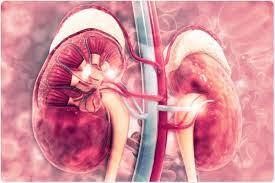A nurse is verifying a record of informed consent for a client who is scheduled for surgery. Which of the following actions should the nurse take?
Explain the procedure to the client before verifying informed consent.
Confirm the client's signature is authentic.
Provide information on the informed consent form about the benefits of the surgery.
Inform the client about the condition that requires treatment.
The Correct Answer is B
Choice A reason:
Explaining the procedure to the client before verifying informed consent is not an appropriate action: While it is essential to explain the procedure to the client and ensure they have a clear understanding of what they are consenting to, this step typically occurs before the informed consent form is presented. The purpose of the informed consent form is to document that the client has received adequate information and has given their consent voluntarily
Choice B reason:
Confirming the client's signature is authentic is the correct action. Verifying the record of informed consent for a client scheduled for surgery involves several important steps. Of these, the nurse's primary responsibility is to ensure that the client's signature on the informed consent form is authentic. This means ensuring that the client themselves or their authorized representative has signed the form willingly and without coercion.
Choice C reason:
Providing information on the informed consent form about the benefits of the surgery is not an appropriate action: The informed consent form typically contains information about the procedure, its risks, possible complications, and alternatives, but it is not the nurse's responsibility to provide this information. The healthcare provider or surgeon is responsible for explaining the details of the surgery to the client before obtaining their consent.
Choice D reason:
Informing the client about the condition that requires treatment is not an appropriate action: The responsibility of informing the client about their medical condition, the need for treatment, and the available options lies with the healthcare provider or surgeon, not the nurse. The nurse may assist in providing information or answering questions, but the primary responsibility for discussing the medical condition lies with the provider.
Nursing Test Bank
Naxlex Comprehensive Predictor Exams
Related Questions
Correct Answer is A
Explanation
Choice A reason:
Eating 1 g/kg of protein per day is the appropriate recommendation. When providing discharge teaching to a client with chronic kidney disease (CKD) who is receiving haemodialysis, the nurse should include the instruction to eat an appropriate amount of protein, which is usually recommended at a specific daily intake based on the client's weight.
Clients with CKD often have dietary restrictions, including limiting protein intake to reduce the workload on the kidneys. However, protein intake is still necessary for maintaining muscle mass and overall health. The recommended protein intake for clients with CKD undergoing haemodialysis is typically around 1 gram of protein per kilogram of body weight per day.
Choice B reason:
Drink at least 3 L of fluid daily. Clients receiving haemodialysis typically have fluid restrictions, as impaired kidney function can lead to fluid retention and electrolyte imbalances. The specific fluid allowance will be determined by the healthcare provider based on the client's individual needs, and it may be significantly less than 3 L per day.
Choice Doption
Take magnesium hydroxide for ingestion. Magnesium hydroxide is a laxative and antacid used to relieve constipation and heartburn. It is not typically prescribed for clients with chronic kidney disease, especially without proper evaluation of their kidney function and overall medical condition.
Choice Coption:
C. Consume foods high in potassium.
Clients with chronic kidney disease, especially that undergoing haemodialysis, often need to restrict potassium intake. Impaired kidney function can lead to the build-up of potassium in the blood, which can be harmful. Therefore, it is essential for clients with CKD to avoid or limit foods high in potassium.

Correct Answer is A
Explanation
Choice A reason:
"Plan to take this medication with food." Is the correct statement. When providing instructions to an older adult client who has a seizure disorder and is prescribed phenytoin (an antiepileptic or anticonvulsant medication), the nurse should advise the client to take the medication with food. Phenytoin can cause gastrointestinal irritation, and taking it with food can help minimize this side effect.
Choice B reason:
"Plan to take this medication with antacids. “is not the appropriate instruction. Phenytoin should not be taken with antacids. Antacids can reduce the absorption of phenytoin, leading to decreased effectiveness of the medication. If antacids are needed for other reasons, they should be taken at least 2 hours before or after taking phenytoin.
Choice C reason:
"Limit foods that contain vitamin D while taking this medication. “This is not inappropriate instruction. There is no specific requirement to limit foods containing vitamin D while taking phenytoin. However, phenytoin may decrease the absorption of vitamin D, which could potentially affect the client's vitamin D levels. Therefore, it is essential for the client to have regular check-ups and possibly discuss the need for vitamin D supplementation with their healthcare provider.
Choice D reason:
"Limit foods that contain folic acid while taking this medication. “This is not the correct statement. Phenytoin can interfere with the absorption of folic acid (a B-vitamin). Long-term use of phenytoin may lead to folic acid deficiency. Therefore, the nurse should instruct the client to consume foods rich in folic acid and discuss the potential need for folic acid supplementation with their healthcare provider.
Whether you are a student looking to ace your exams or a practicing nurse seeking to enhance your expertise , our nursing education contents will empower you with the confidence and competence to make a difference in the lives of patients and become a respected leader in the healthcare field.
Visit Naxlex, invest in your future and unlock endless possibilities with our unparalleled nursing education contents today
Report Wrong Answer on the Current Question
Do you disagree with the answer? If yes, what is your expected answer? Explain.
Kindly be descriptive with the issue you are facing.
